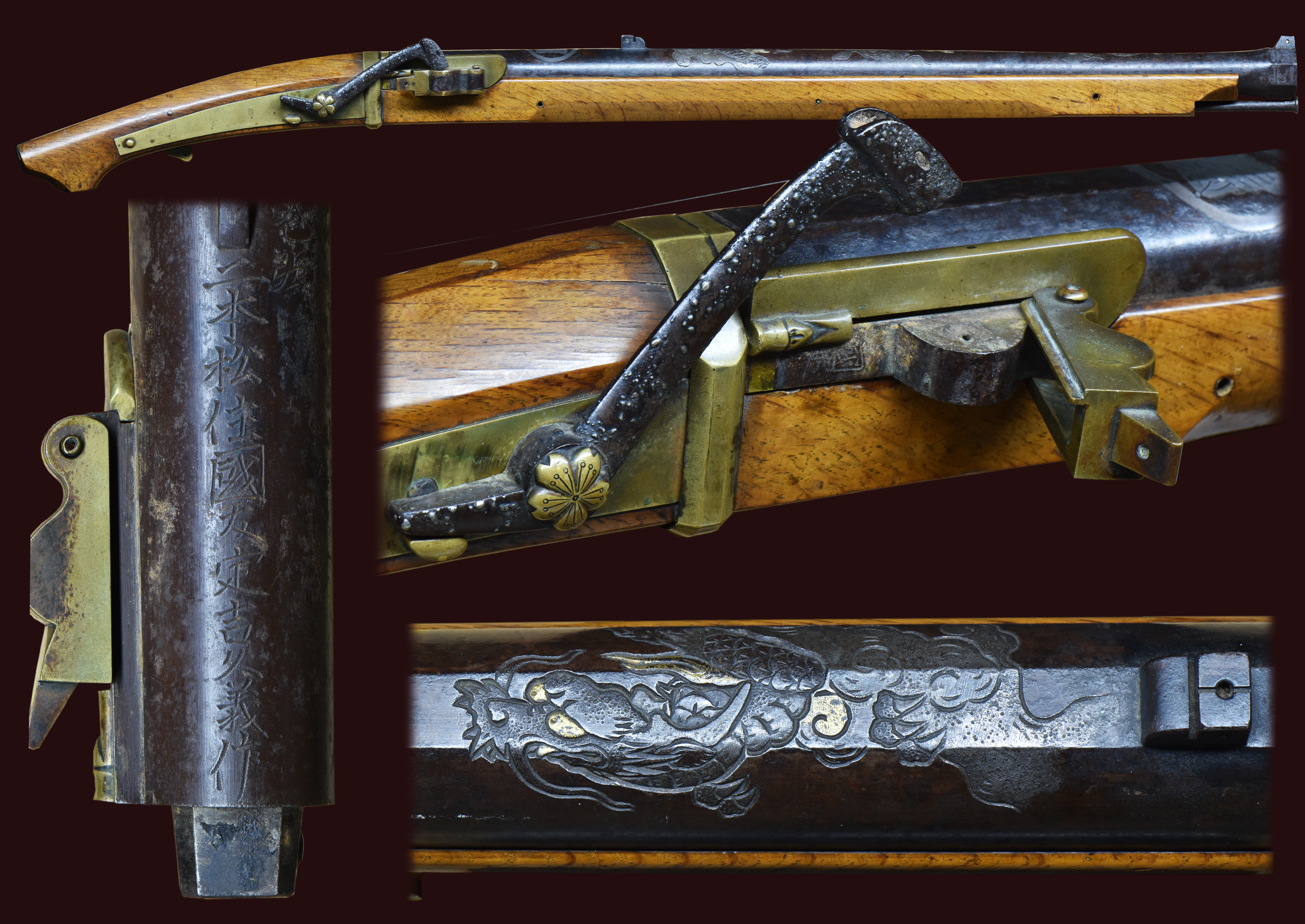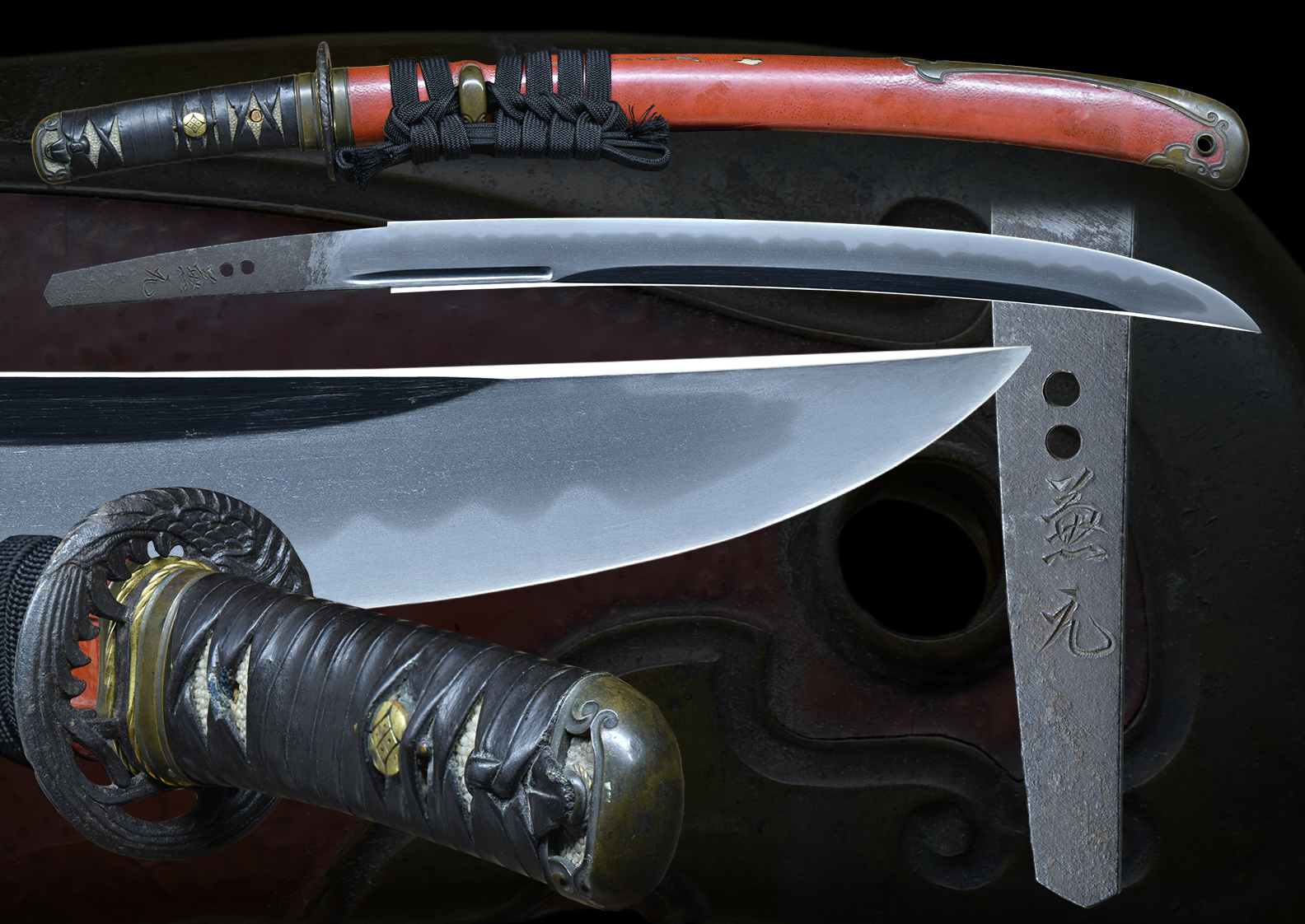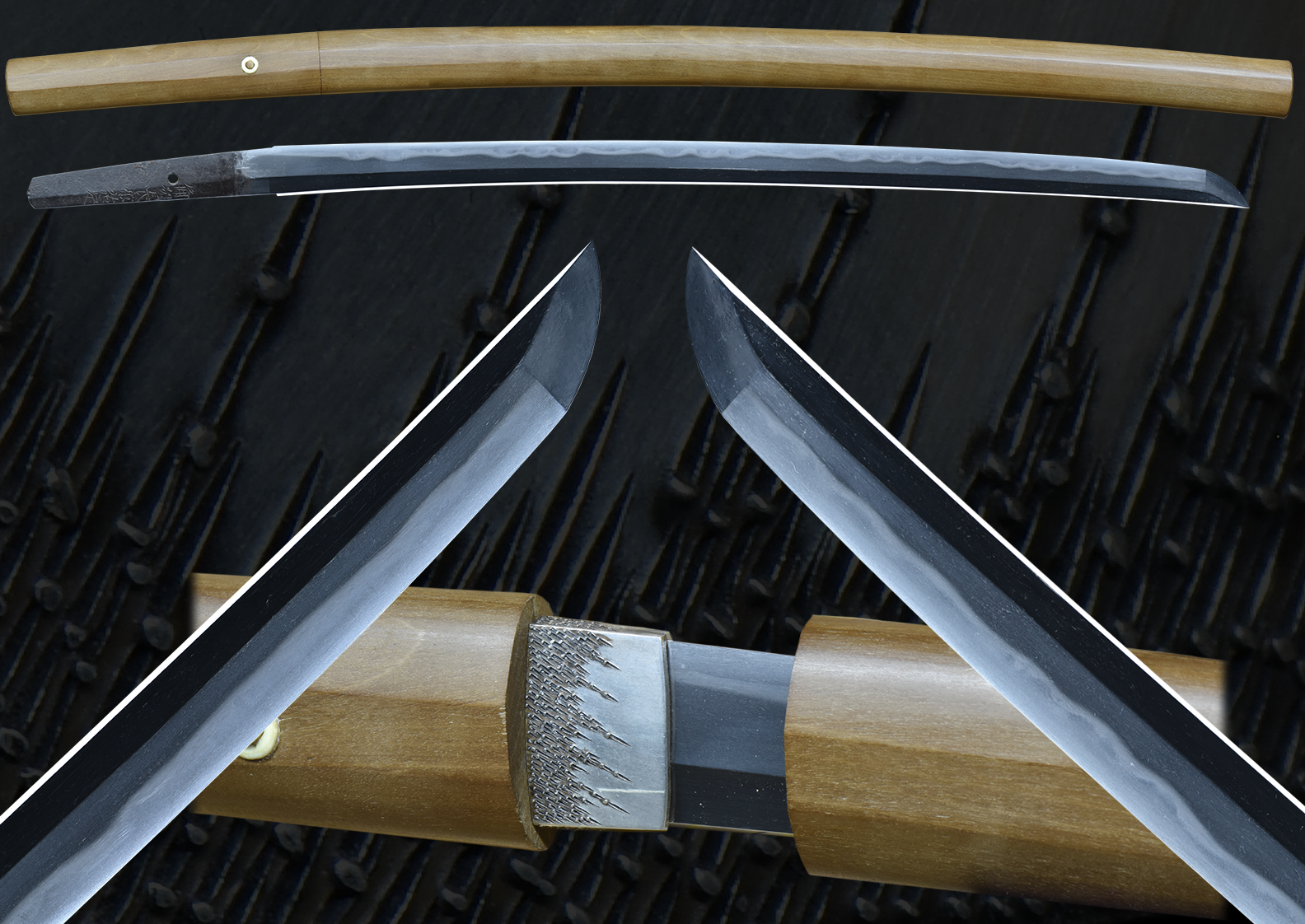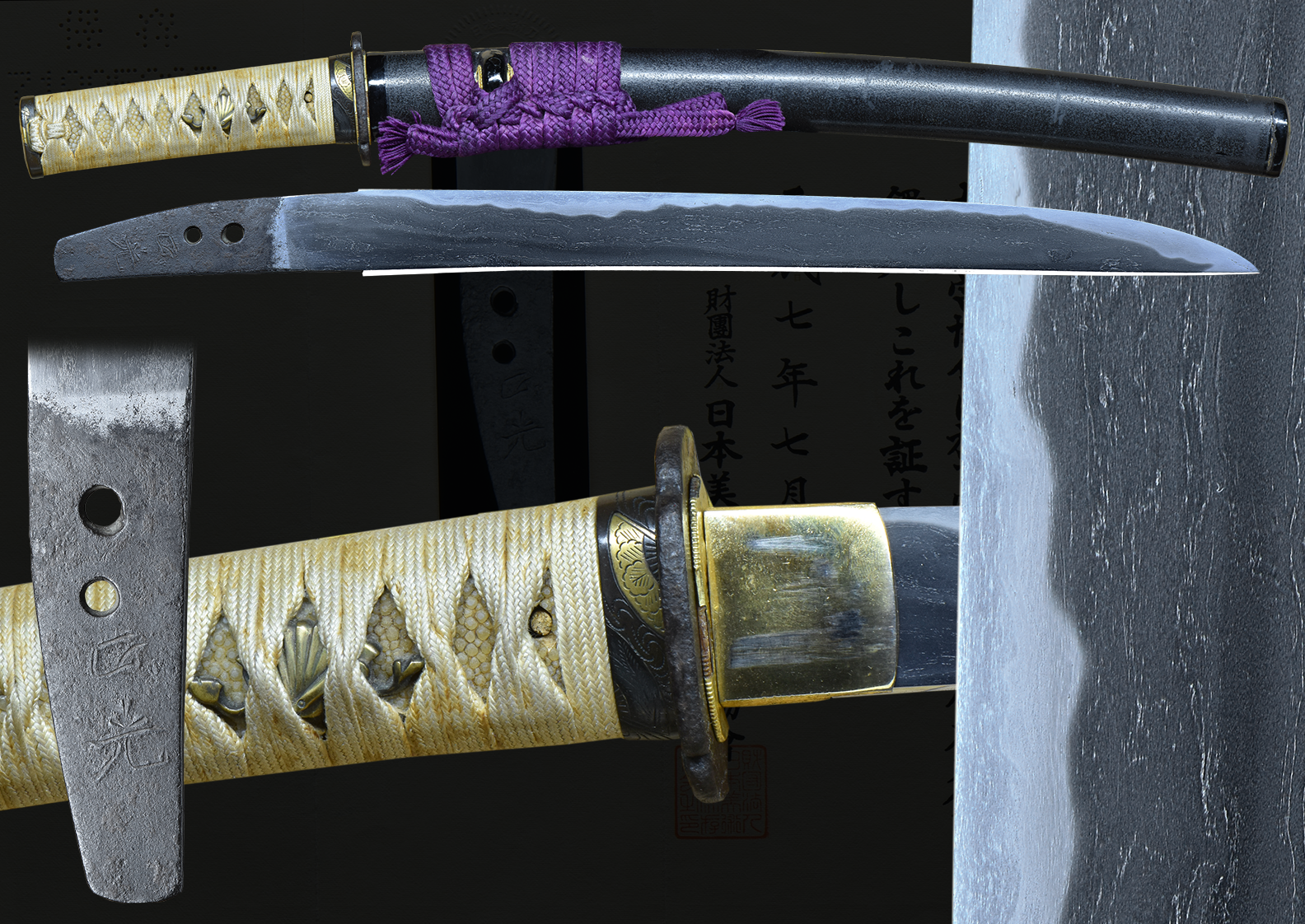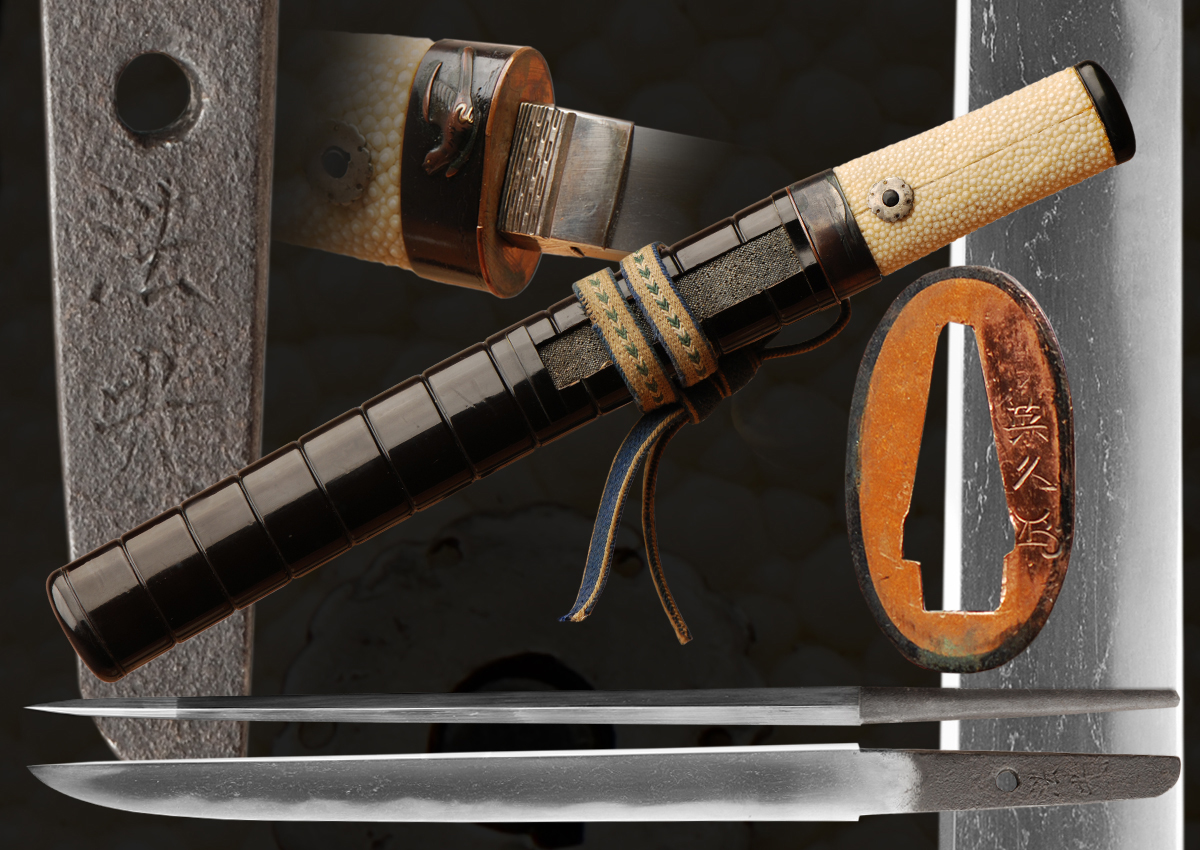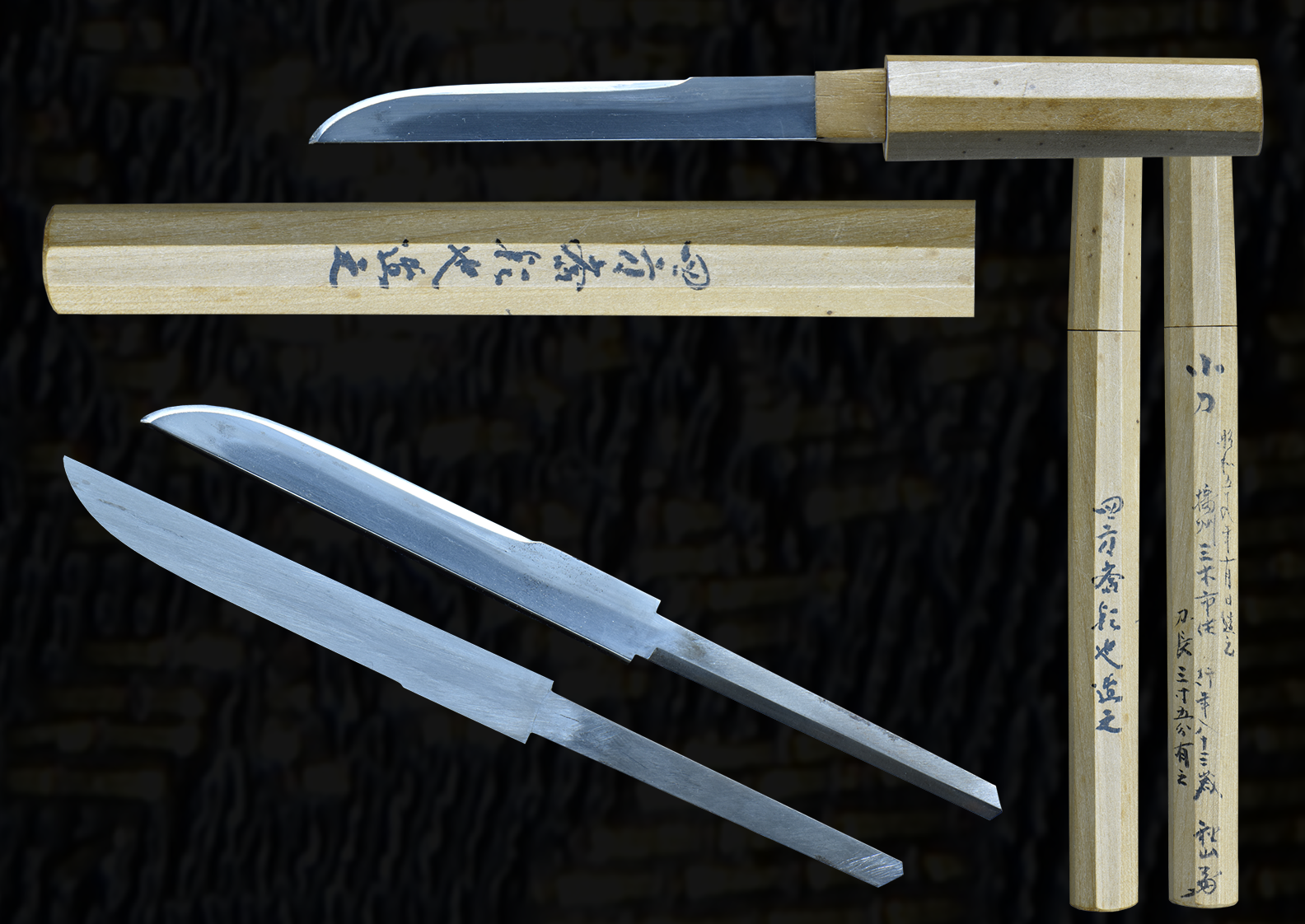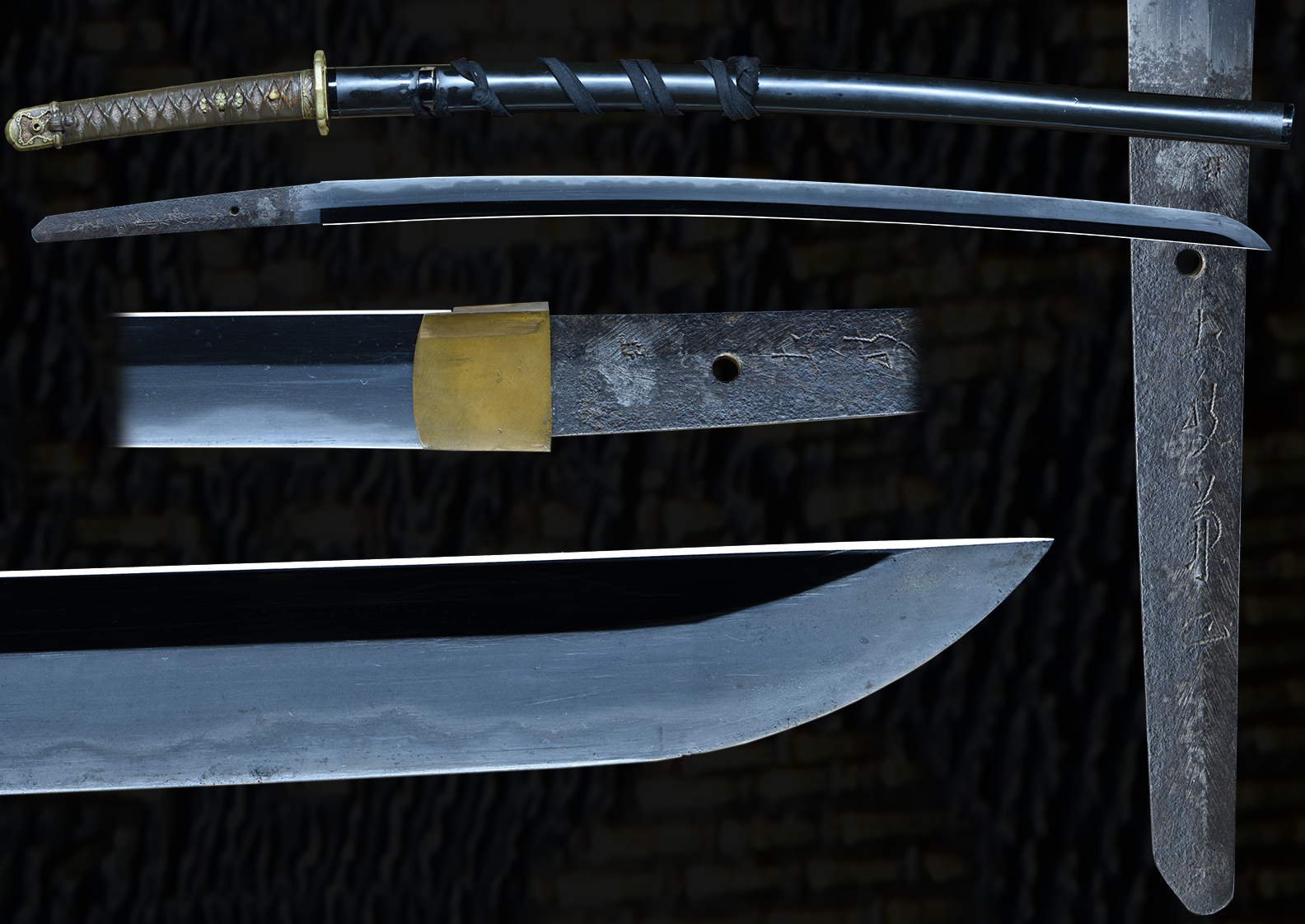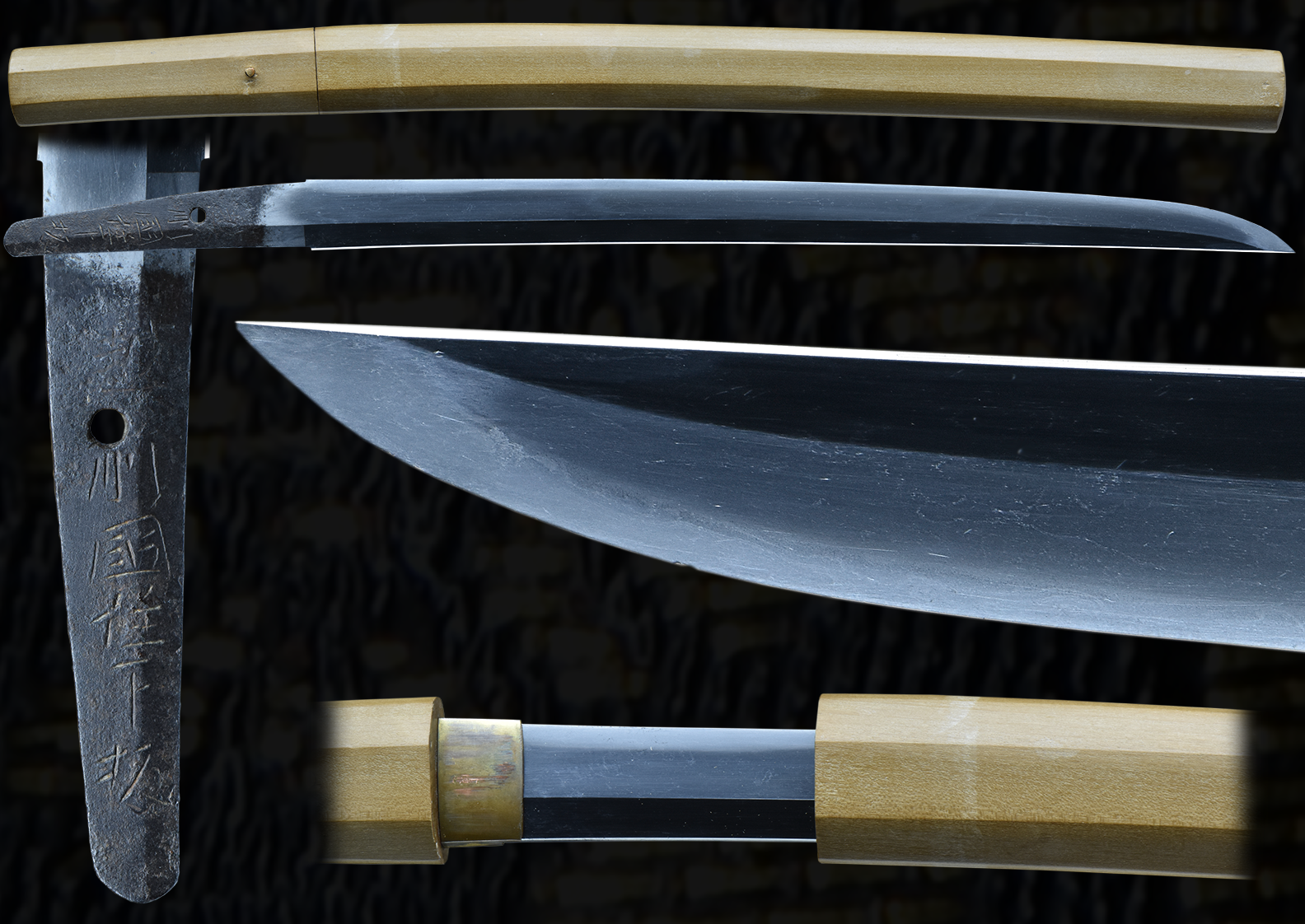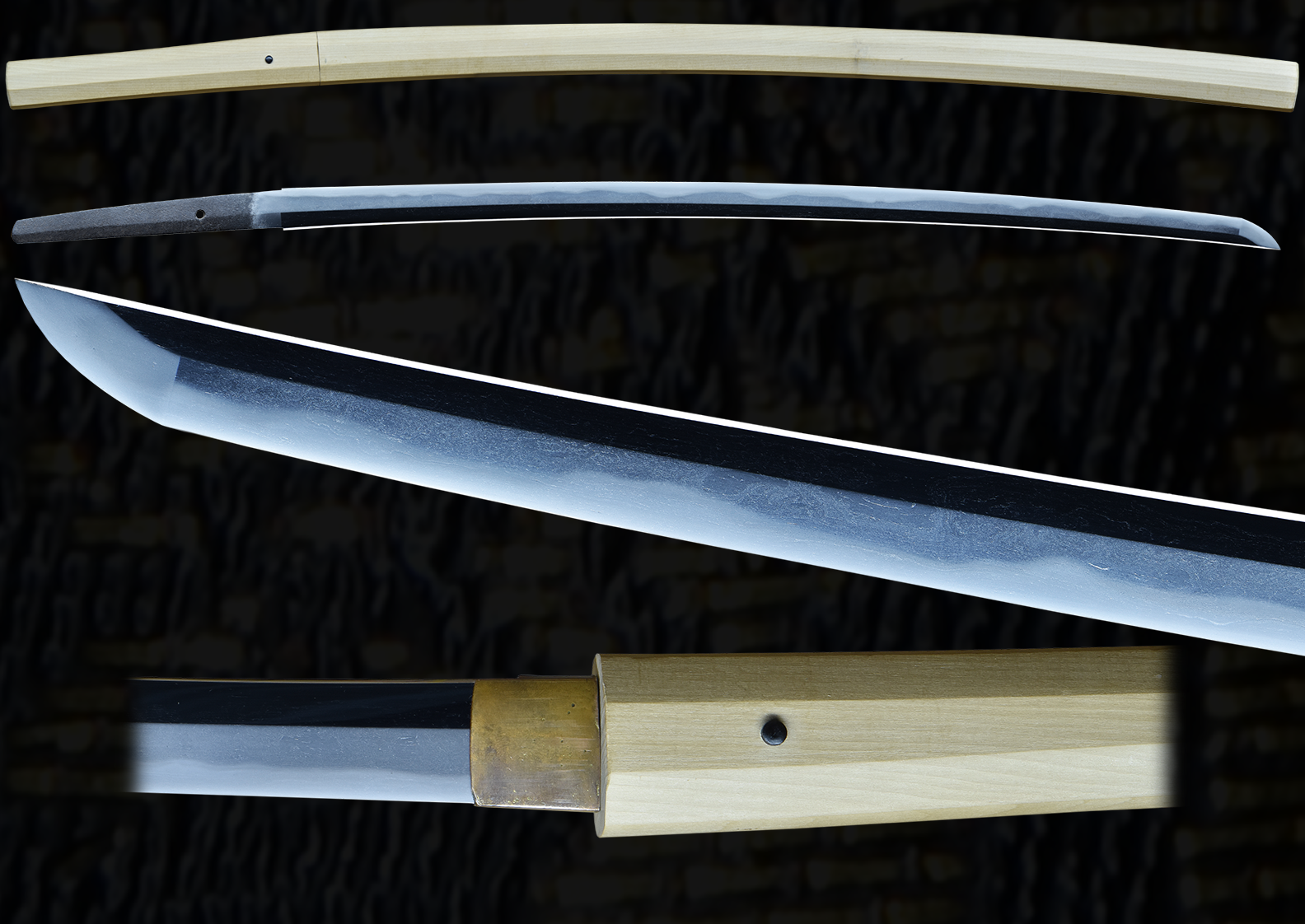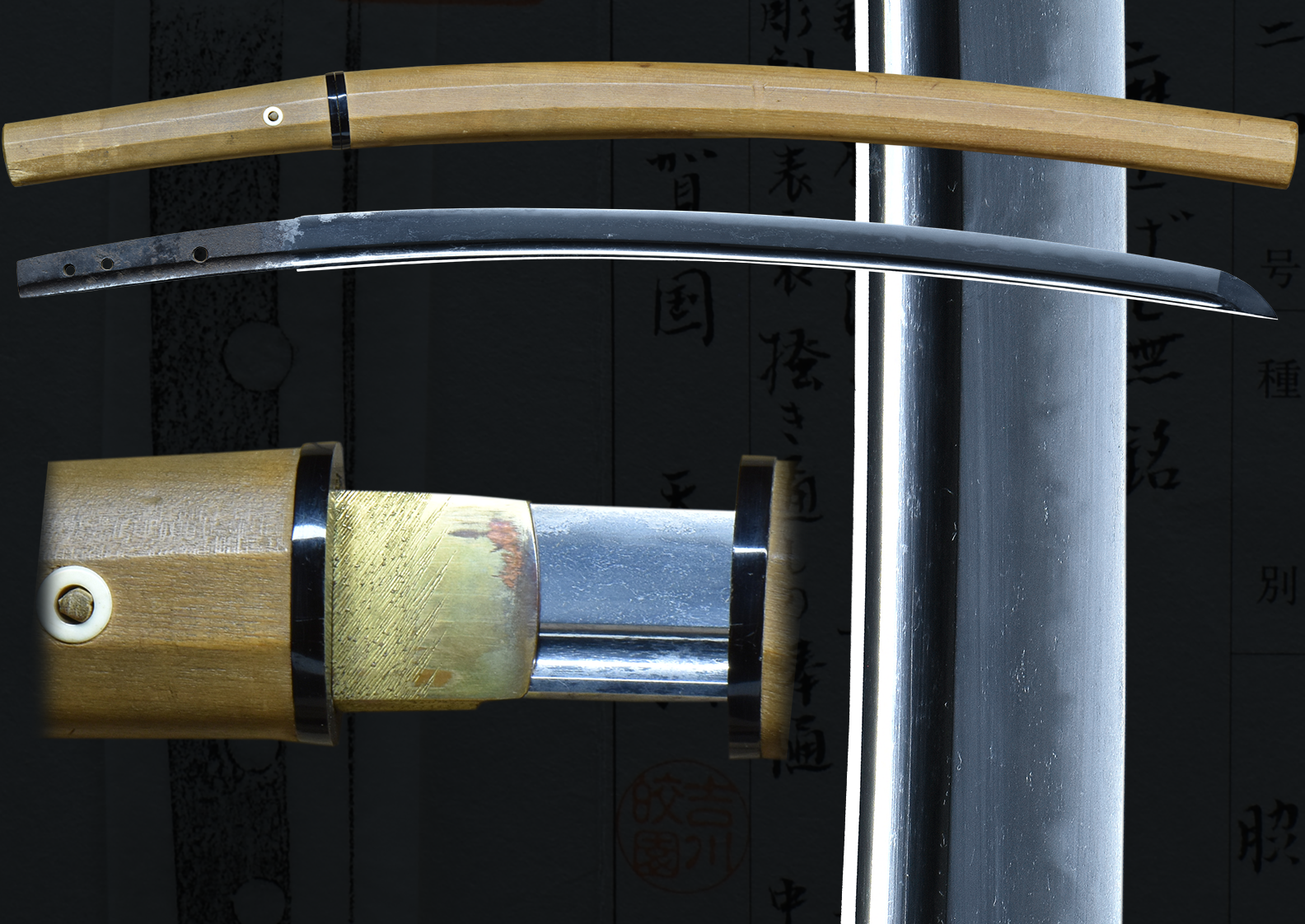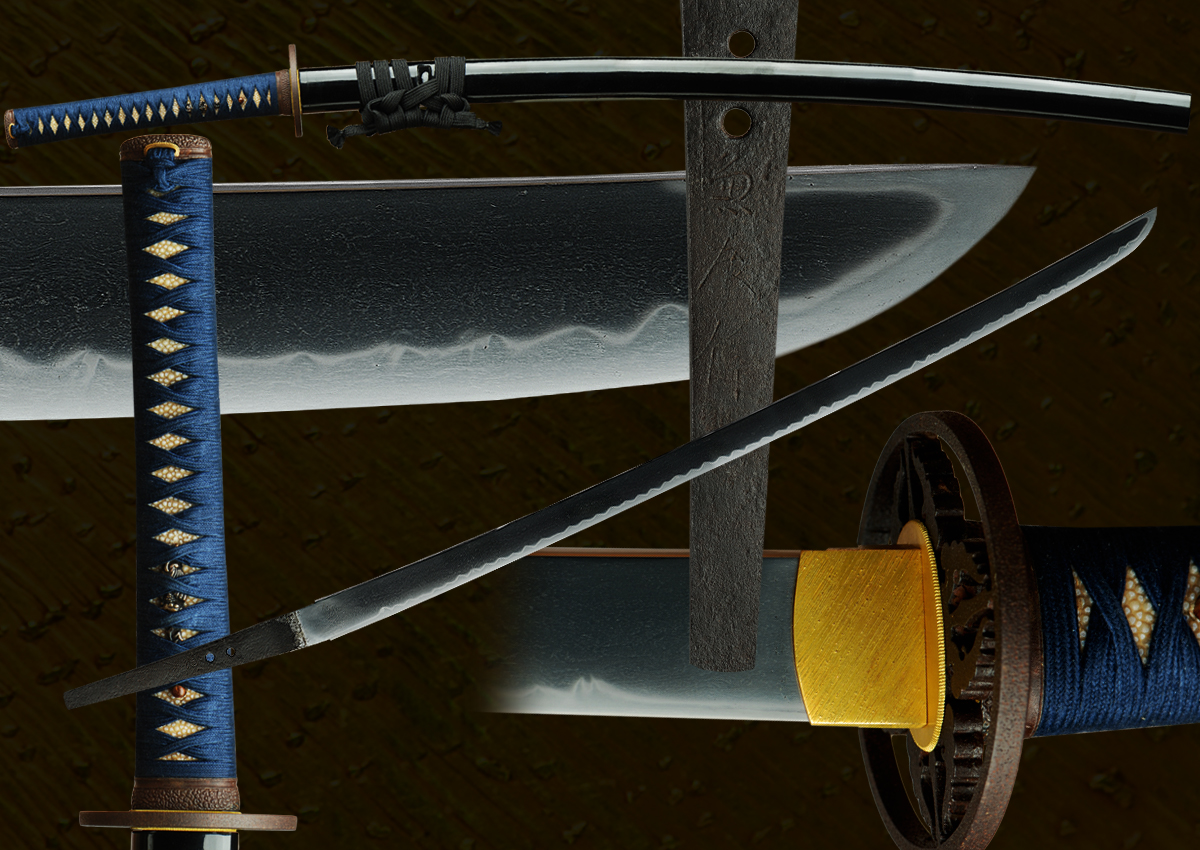A fine example of the older Mino style blades this sword was shortened at the machi to true uchikatana size though still retains the original mei of “ Kane Tomo Saku “. Uchikatana were mainly used in one handed fighting styles which were prolific during the Muramachi and early Edo period . The hamon is a wonderfully active Gunome midare with a hada of itame. Many hataraki can be seen within the hamon. There are several courser areas as pointed out in the pictures. The blade appears ubu but shortened a little bit at the machi but the signature is fully intact. There are 3 holes in the tang from prior mountings,
A hira-zukiri sword of this length is most prized by the collector . A sword such as this polished shows the true workmanship of the steel from side to side.
The koshirae is a true fit to the blade and is in the Uchikatana style. The Sukashi style tsuba and stone like texture of the fuchi kashira is very appealing though not old. The Tsuka-Ito is blue with black sageo.
During the twelfth century Uchigatana started to be used and by the Muromachi Period approximately 1336 to 1573 the uchigatana began to rival the tachi as the sword of choice by warriors. Unlike the tachi, the uchigatana was worn edge-up in the belt, this and usually being slightly smaller than the tachi was the main difference between the tachi and the uchigatana. Since it is worn differently, the engraved words on the sword are also opposite to the tachi, making the words still upright instead of upside-down like when one wears the tachi like an uchigatana. This sword became popular for several reasons, the uchigatana was more convenient to wear and did not get in the way of using a polearm as much as a tachi, also the frequency of battles fought on foot and the need for speed on the battlefield, were major reasons for the uchigatana being rapidly accepted and indicated that battlefield combat had grown in intensity. Since it was shorter, it could be used in more confined quarters, such as inside a building.
Unlike the tachi, with which the acts of drawing and striking with the sword were two separate actions, unsheathing the uchigatana and cutting the enemy down with it became one smooth, lightning-fast action (this technique was called battojutsu otherwise known as Battokiri). The curvature on the blade of the uchigatana differs from the tachi in that the blade has curvature near the sword’s point (sakizori), as opposed to curvature near the sword’s hilt (koshizori) like the tachi. Because the sword is being drawn from below, the act of unsheathing became the act of striking. For a soldier on horseback, the sakizori curve of the uchigatana was essential in such a blade, since it allows the sword to come out of the saya (sheath) at the most convenient angle for executing an immediate cut.
The word uchigatana can be found in literary works as early as the Kamakura Period, but during that time the uchigatana was used only by individuals of low status and privates in the ranks. Most uchigatana made during the early Kamakura Period were not of the highest standard, and because they were considered disposable, virtually no examples from these early times exist today. It wasn’t until the Muromachi Period (considered by some to be a kind of Dark Age in the history of the Japanese Sword), when the samurai began to use them to supplement the longer tachi, that uchigatana of high quality began to be made. In the Momoyama and Edo Periods, the tachi was almost totally abandoned and the custom of wearing a pair of long and short uchigatana together, the daisho (literally “big-little”) became the dominant sign of the Samurai class.
- Mei: Kanetomo Saku
- Date: Late Edo (1700’s-18
- Nagasa: 26-5/8 inches
- Sori: 10.0 mm
- Width at the ha-machi: 31.4 mm
- Width at the yokote: 22.6 mm
- Thickness at the mune-machi: 7.6 mm
- Construction: Hira zukuri
- Mune: Iori
- Nakago: Ubu
- Kitae: Itame
- Hamon: Midare Gunome
- Boshi: Maru
- Condition: polished
Email us if your interested in this item and remember to include the order number for this item: fss-731.
For Sale
